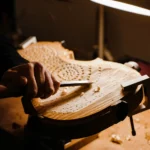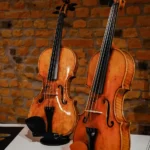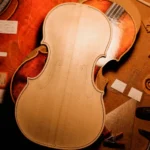The Perfect Violin Bow: What to Know Before Buying
Back to BlogAre you a violin player wondering what to look for when buying a violin bow? When we’re looking for a new violin bow, it’s easy to feel overwhelmed. After all, the bow is one of the most important pieces of equipment you need to play the violin.
Being such an important step makes it challenging to think about the right violin bow, as it is a big investment that you are about to make. A bow is a key each violin player uses to unlock their violin’s sonic potential, that is why it is important to understand exactly what a good violin bow does.
Our purpose here is to help violinists pick the right violin bow by bringing you the best information you must know and will make a total difference.
The right choice for a violin bow
You will have to consider a variety of factors ranging from the material it’s made of to its overall balance. However, all violin players—from beginners to virtuosos—eventually confront similar issues. But don’t worry, we are here for you to clarify these questions!
The three materials used in making a quality violin are brazilwood, Pernambuco, and carbon fiber. Brazilwood has been the most commonly used material to make bows for the past 250 years. Its combination of hardness, flexibility, density, and sheer beauty, along with the unique ability to maintain a fixed curve, results in an exceptional bow that can provide a lifetime of service to its owner. The quality of the material used in a bow impacts its ability to play. Wood bows are the best option for a violinist.
There are many subspecies, and each one is different. Pernambuco wood is not equal; it varies greatly in quality. Some master bow makers spend years looking for the best pernambuco wood to use in making their bows. Nowadays, the brazilwood tree can be found only in remnants of the coastal forests of Brazil, and it has appeared on the list of plants threatened with extinction.
To be sure that a bow is made with certified brazilwood, look for the CITES certificate.
Violin Bow features to look for
How the bow feels in your hands is directly affected by its balance. In order to determine which balance point of a given bow is the best fit for your needs, you must test its feel. A violin bow’s weight, which can range from 58 to 63 grams, is a matter of personal preference. On our blog, Lucchi told us the secret to trying and testing a bow; check it out!
Also, take a look if the bow is straight and has a suitable curve. Now, the stiffness. A violin bow’s proper stiffness and responsiveness are judged differently by each individual player. It’s crucial when testing a new violin bow that you play the way you normally do.
Although it seems controversial, testing a bow at home actually has many advantages. This allows you to see how the violin bow works and responds in the same conditions where it will be most often played. Before going to any store, don’t forget to establish a budget, this is very important when finding the perfect violin bow. Also, remember to have your current violin bow always next to you so you can feel the differences.
A violin bow is designed to work best with its matching violin, so look for a bow that complements your violin.
A violin bow is a companion that you will have for a while, however, you need to focus on your needs as a violin player. Don’t stress yourself looking for the most durable bow, and you might improve your skills faster than you imagine and might need another one or it will just make things more confusing.
When seeking a bow, consider your ability and playing style. And don’t forget that, to achieve your full potential, you need an excellent bow in one hand and an excellent violin in the other! When the violin bow flows with you as you play, it gives you confidence and allows you to play with less effort. The violin bow needs to become an extension of your hand so you can always perform better.









